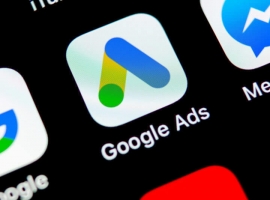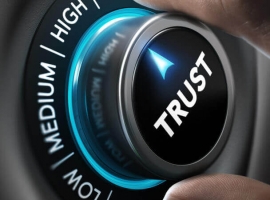“Are you going to listen to me or to the couple at that table?” demanded my wife, probably for the 10,000th time. We were at dinner and, once again, I was caught eavesdropping on the conversation of nearby patrons. Truth be told, I do more than listen — I try to construct the full story of their lives or the occasion.
While it’s bad table manners, this desire to fill in the blanks of the stories that surround us is an innate and powerful evolutionary learning mechanism. As human beings, we strive to understand the world through story, constantly “filling in the blanks” left by incomplete information. The brain has a remarkable ability to assemble disparate parts into a cohesive whole if there are indications that they belong together.
The brain is constantly seeking to make sense of and understand the world for self-preservation purposes. Knowing whether the couple next to me in a restaurant is married or just dating is not critical, but, for our early ancestors, using partial information could have saved a person’s life, if, for example, it led them to deduct that a tiger attacked a neighbor while she picked berries in the Eastern forest.
Master storytellers have long sought to take advantage of this innate human capacity in service of increasing the impact of their tales through the technique of “disruptive narrative”: presenting story elements in a non-linear fashion and enlisting viewers’ brains to put them together in the correct order.
Storytelling is effective because, rather than just presenting a list of facts — which engages only the language centers in our brains — stories trigger parts of our brains that allow us to share in the experience, to empathize. By making us feel like we are partly experiencing the story ourselves, it helps us to retain the moral or message.
Telling stories using disruptive narrative can increase this empathetic response exponentially — engaging our brains in an even more active manner — and therefore communicating the message more powerfully. (Editor’s note: this idea seems to describe an “Ikea effect” for stories, in which people are more engaged with narratives that they’ve helped assemble themselves.)
Digital media: Made for disruptive narrative?
Digital has unleashed the power of disruptive narrative. In the old world, the available media meant that stories, for the most part, had to be told in a linear fashion. Extraordinarily creative artists occasionally succeeded in telling stories outside of the linear narrative structure —think James Joyce in literature, Queen in music, and Quentin Tarantino in film.
The number of times this was done successfully was limited, as artists had to “hack” the established linear media forms— with the resulting art requiring a high degree of cognitive processing by the audience to “get it”. Digital not only allows for disruptive narrative, but, it could be argued, demands it.
Disruptive narrative defined
The origins of disruptive narrative are unknown, as nonlinear storytelling precedes the written word. Homer’s Iliad and the Odyssey, and the ancient Indian epic the Mahabharata make use of nonlinearity to grip the audience and keep listeners amid the action. The Roman poet Horace first described this phenomenon in the 1st century BCE when he claimed that starting a story in medias res (in the middle of things) was a critical element of the ideal epic poem, as opposed to dragging the reader through unnecessary exposition by starting the story ab ovo (from the egg).
This ancient style of disruptive narrative was episodic, breaking the story down into digestible episodes from varying perspectives occurring at different points in the overall timeline.
This same form of disruptive narrative is largely popular today, and can be observed across film, television, and literature. Starting in the middle of things and telling episodic stories can serve a variety of purposes: to provide exposition while keeping the audience engaged, as a narrative hook forcing the audience to question “how we got here,” to portray events happening simultaneously, and to tell an “organic story” by mimicking the irregularities of human memory.
The power — and risk — of disruptive digital narrative
Traditional disruptive narratives may offer content creators a multitude of creative ways to engage their audiences, but digital has the power to expand the depth of disruption by orders of magnitude.
Written word, music, and film, though their narratives may be nonlinear, can still only be experienced in a linear fashion. A book is read from start to finish regardless of how much jumping between timelines occurs within. Films don’t allow their viewers to choose how they experience the action; they merely run their allotted time.
Digital provides the opportunity for creators to tell truly nonlinear narratives by incorporating simultaneity and viewer agency.
Importantly, there is a limit to how disruptive a narrative can be before we can no longer relate as successfully. Storytellers must provide just enough information in the right manner to allow the audience to put it together.
Too much and it’s not disruptive; too little and it’s incomprehensible and the audience won’t even try to put it together. The limit of disruption is not set in stone, however, and storytellers throughout the last century have been figuring out new ways to tell stories that blur the lines between teller and audience — between just listening and experiencing.
Five principles of disruptive digital narrative
Digital has significantly advanced our ability to build brands, but it has also made it more complicated. Telling stories remains critical, but today the winners are those who do so in more than just a linear fashion.
From a practical point of view, this means that campaigns today should be sets of creative assets that work together as a unified whole — an ad system. Getting this right is difficult, with successful practitioners mastering five principles:
- Make it great. Linear or non-linear, the story must be good. This starts with a powerful big idea that is brought to life in an execution that is distinctive, meaningful, and relevant.
- Tell a complete story. We know that ads that capture the movement of a fully developed story are the ones that will compel the consumer to buy. Research shows that the closer an ad conforms to the conventional dramatic arc — consisting of a beginning, middle, and an end, with transitions in between — the more successful it is.
- Media plan it. Having a media plan that ensures the target audience sees the necessary elements of the story in the right context and timeframe is equally important to the content of the story itself. The media team must be tightly integrated with the story creators to pull this off.
- Use a consistent palette. Give the audience clear executional cues that the parts of the story are of a whole. These distinctive brand and story assets (characters, music, visuals, tagline, etc.) signal to the viewer to associate each element with the others.
- Balance disruption with ease. Behavioral science has shown that making material harder to process —what researchers call increasing disfluency — can improve retention. It has also proven that much of advertising is processed in a system 1, non-conscious manner by our brains— which is aided by easy-to-digest executions. While digital makes disruptive narrative easier to execute, it doesn’t lessen the challenge of presenting stories in a way that challenges our brains just the right amount.
Disrupting the competition
Digital has provided brands, agencies, and their media partners an impressive kit of tools that have enabled the use of disrupted narrative on a scale never before possible. Those who skillfully deploy this powerful form of storytelling can distance themselves from competitors who rely solely on linear forms.
The post The power of disruptive digital narrative appeared first on Marketing Land.
Original article source: https://marketingland.com/feed









There are no comments